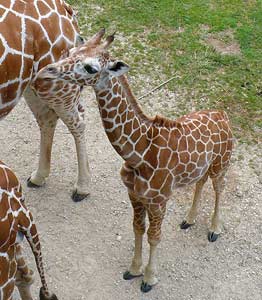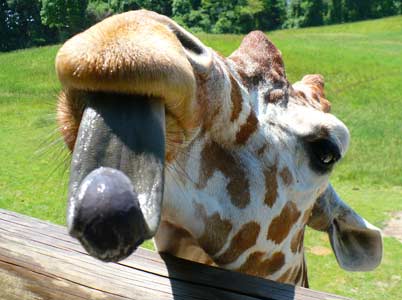Giraffes For Sale



Giraffes
If for whatever reason you have your heart set on owning a giraffe and hopefully don't live in an apartment, you should be advised that as an exotic animal there some states that either outright prohibit their ownership or seriously restrict them. Nine states (Idaho, Alabama, Nevada, Missouri, Ohio, North Carolina, South Carolina, West Virginia, and Wisconsin) prohibit owning any exotic pet without a permit.
No Giraffes currently listed for placement
Twelve states (Delaware, Arizona, Maine, Indiana, Montana, Mississippi, Oklahoma, North Dakota, Pennsylvania, South Dakota, Rhode Island, and Texas) require a permit to own any exotic pet. Finally, there are nine states (Florida, Arkansas, Illinois, Louisiana, Kansas, Michigan, Minnesota, Virginia, and Nebraska) where there is a partial ban on exotic animals, which means a giraffe would be illegal. In the remaining 20 states, owning an exotic animal is totally illegal.
That said, if you live in a willing state and you still have your heart set on a giraffe, there are a few things that you should know in order to make yourself, your giraffe, your neighbors and the authorities happy.
Overview of giraffes
The first thing you should know about owning a giraffe is that even getting one is very difficult. First, there are only about 20 breeders in the United States who offer giraffes, and most of these will only do business with zoos and other institutions. In fact, most experts point out that there are only about 350 giraffes in the United States today, and most of those are owned by zoos. There are only a few individuals who own giraffes, and these raise them so that eventually they can be purchased by a zoo.
Why such a hassle? Simply put, giraffes are not only wild animals, but they can grow to more than 16-20 feet tall and weigh an average of 2,628 lbs. They are native to mid-continent Africa, from the area of Somalia on the north and the northern tip of South Africa in the south. This area where they are native is largely plains, which is a good thing since a giraffe can sprint up to 37 mph over a short distance, and up to 31 mph over several kilometers.
The spots amd patterns of the giraffe help the animals blend into their natural environment and blend into the trees and other surroundings to help the giraffes from predators
How much does a giraffe cost?
Purchasing a giraffe is no small endeavor either even if you do have the money required, which range on average from $40,000-$80,000 that would be required to acquire a healthy, giraffe. And at this price, you would probably have to deal with a "going out of business sale" at a zoo, since and younger giraffe would probably set you back more than that.
How much space does a giraffe need?
One of the prime drawbacks to owning a giraffe privately is, of course, their size and the area they would need to occupy if owned. This problem is minimized when a giraffe is young, but once it grows to about four months old it would be necessary to move it to a larger area where it can live in a space that they would be more accustomed.
What do Giraffes eat?
Giraffes are ruminants, eating almost exclusively leaves and grain, although they have been known to lick the meat off of dead carcasses in the wild. Regardless, they will usually eat about 75 lbs of foliage daily. For the most part, giraffes eat during the first and last hours of the day. Between these hours, they ruminate, which is just generally doing nothing but chewing their cud and watching out for predators. Giraffes normally live long lives, especially considering that they are ruminants, up to 25 years. Considering their size and the potential effect of their powerful kicks, giraffes have few predators.
Giraffe Breeding
Giraffes live largely in groups of as many as 32 individuals. This is primarily done for feeding and breeding purposes. The most stable members of these groups are the females and their young, while males will move about frequently, sometimes many miles from where they normally spend their lives. Giraffes are largely polygamous, and their gestation period is 400–460 days, after which a single calf is born.
Veterinary Care
Needless to say, it would require not only a veterinarian with a unique skill set to work on a giraffe, he would also need a very specialized work space to accommodate these rather tall and large patients. If for no other reason than their size, veterinarians who work with these types of animals normally don't work in private practice. Instead, they work for the institutions where their animal patients live and work on the premises.
All of this is a long way around saying that unless you have been entrusted with some very unique circumstances, perhaps you should consider owning something a lot smaller, as well as traditional, like a dog.







Comments